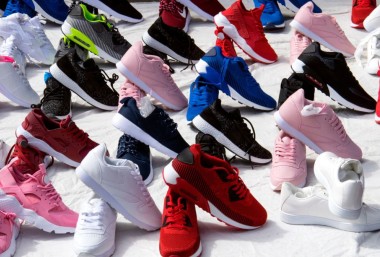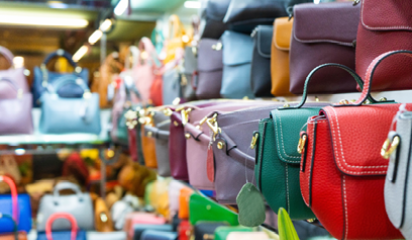The fashion industry is rife with trends like "Quiet luxury"[1] and "Ballet core"[2], and micro trends such as "grandpa core"[3] and "the mob-wife aesthetic"[4], making the ever-changing fashion landscape hard to keep up with. The shifting landscape can also be seen in the beauty industry, ranging from "the clean girl aesthetic"[5] and "full-face glam"[6] to mini trends like "glass skin"[7] and "blueberry nails"[8].
Keeping up is not for the faint of heart. It can also be expensive.
Enter "dupes". Dupe is short form for "duplicate" and refers to a product made to look like a more expensive and/or higher quality product. Over the last few years, dupe culture has exploded. Social media users show off cheaper dupes as alternatives to the trending, usually more expensive, fashion and beauty products. Even well-respected publications will alert readers to dupes.
On TikTok, #dupe has 7.4 billion views, up by over a billion since the start of 2024.
Initially, it seemed there was nothing particularly sinister about the dupe trend: it was essentially bargain-hunting for the online generation. It provided honest views for younger social media influencers keen to hop on trends without spending a fortune. However, what it inadvertently ushered in was a new form of counterfeit culture and acceptance of lookalikes, pedalled by social medial influencers.
Now, there’s a battle between brand owners, the counterfeiters, the honest lookalike creators, and the influencers.
So, is imitation a form of flattery, or a form of robbery?
The legality of dupes is nuanced and often straddles the line. At one end of the dupes spectrum are products pretending to be another product; these products are often referred to as counterfeits or fakes . At the other end are products that are similar in appearance to another product but with enough differences to avoid legal repercussions. More often than not, dupes lie somewhere in between the two.
Imagine you have created a fragrance called "Boundless Breeze", with a fun and unique bottle. Your fragrance is doing so well on the market that social media is abuzz with dupes for your product. A dupe called "Endless Breeze", in a similar bottle, is likely to be extremely frustrating to you, could detract from your sales, and could potentially confuse consumers.
One of the first things producers of dupes are likely to emulate is your brand or product name. Trade marks are the best form of protection for that. Next up might be the packaging, which can be a quick and easy way to visually signal a particular product to consumers. Having robust intellectual property protection can help safeguard against dupers, and even packaging can be protected in a number of different ways: from trade mark registration in the design or shape, through design registration for the visual features of the bottle, and copyright to protect the layout and artwork. Each right will give you a different layer of protection against potential dupes.
Below, we discuss some of these layers in more detail.
How can the 'original' defend itself against dupes?
Continuing with the Boundless Breeze example, if the product is under-protected, dupes are likely to take advantage of that. As owner of the original, you can narrow the window of opportunity for such dupes by registering, asserting, and enforcing your rights.
Depending on which intellectual property rights apply to your original, there are several ways in which you can seek to defend the product against dupes.
Trade marks
Register “Boundless Breeze” as well as relevant logos, and possibly even a shape mark (our register shows some examples of perfume bottle shape registrations specifically). Assert that the name “Endless Breeze” (or logos or any other fixed point of reference) being used by the dupe are confusingly similar to rights you hold.
Copyright
The law around copyright in product packaging is different in Australia and New Zealand.
- New Zealand is more generous in what copyright can apply to. In New Zealand, it may be possible to make a copyright claim in regard to the shape of products where the owner has an original design and a substantial part has been copied – for example, the shape of the Boundless Breeze bottle.
- In Australia, copyright is not as generously applicable and does not necessarily extend to mass manufactured products. That is not to say copyright cannot be relied upon in Australia, but there are other avenues better suited to protect packaging and mass manufactured products.
In addition, in both countries there is a possibility of arguing copyright infringement where design illustrations or certain other artistic design elements have been copied. This could apply to the artwork created when designing the Boundless Breeze logos and labels.
Design registrations
Design registrations can be used to protect visual aspects of packaging such as the shape or surface pattern; in the case of Boundless Breeze this could apply to the shape of the bottle. If the design of the Endless Breeze dupe packaging is not substantially different, it should be captured by your registration. Unlike other IP rights, design registrations have a limited shelf-life; 15 years in New Zealand and 10 years in Australia.
Passing off
The tort of passing off can be used to protect the getup of product packaging and other branding elements. For passing off to succeed against a dupe, you will need to establish:
- that you have a substantial reputation in the appearance of the Boundless Breeze packaging or particular elements of the packaging so as to claim goodwill in the appearance;
- that misrepresentation and confusion have occurred because consumers believe the Endless Breeze dupe is your product; and
- that you have suffered damage, e.g. a loss of sales or potential reputational damage around quality.
Consumer protection laws
Australia and New Zealand both have general consumer protection laws aimed at preventing a likelihood of misleading or deceptive conduct in trade. These laws are sometimes directed at getup and relied upon alongside the tort of passing off. Similar to passing off, you would need to establish that you have a substantial reputation in the product packaging and that the use of the similar packaging by Endless Breeze is likely to mislead or deceive – similar analysis to the comments on passing off apply.
Consumer protection law claims can also be made in respect of marketing materials or trade conduct more generally. For example, if misleading statements are being made by the producer of Endless Breeze or by influencers or others who are being paid to review or comment on the product, then there may be some cause of action under consumer protection laws in both countries. Such misleading statements might be, for example, that Endless Breeze “smells the same as” or “is just as good as” Boundless Breeze, when the products are in fact quite different, or where the comparison cannot be substantiated. In these cases, a claim could potentially be made against the duper, or the influencer, depending on who is misleading consumers.
It is also worth remaining vigilant by consistently overseeing both market and online platforms. Online marketplaces often provide specialised programs aimed at safeguarding against counterfeit and infringing products, which can be a further valuable resource in your monitoring and enforcement efforts, assuming that you have intellectual property rights to rely on.
Enforcing your rights
After identifying a dupe, a well-drafted cease and desist letter can be an effective first step. The letter should notify the potential infringer of your rights and ask them to stop. This is most effective where you can reference several different layers of protection and rely on several different enforcement mechanisms, as referred to above.
To strengthen legal options, it’s best if your intellectual property is used and identified consistently across all platforms and products. This approach not only strengthens the legal case by showcasing your reputation - essential for successful claims of passing off or breach of consumer laws - but also reinforces the originality of your creation. By engaging in thoughtful intellectual property protection and marketing strategies, consumers can also be educated on the value of buying original, vs. the cost of opting for cheaper imitations, even if they are simply masquerading as harmless bargains.
Conclusion
The debate around dupes and imitations is multifaceted, touching on legal, ethical, and economic considerations. It challenges us all to balance the fine line between accessibility for consumers and the protection of originality and brand identity.
When it comes to protecting or enforcing your intellectual property rights there’s no substitute for expert advice. If you need specialist help, reach out to a member of our team today.
[1] Think logo-free fashion and products, with a focus on exquisite materials and muted tones.
[2] Think soft pastels and soft and airy materials, and of course, ballet slippers!
[3] Think cozy cardigan, sweater vests and leather loafers – if it’s in your grandad’s wardrobe, it probably fits the bill.
[4] Think fur coats, bold jewellery and animal print.
[5] The make-up equivalent of quiet luxury, think barely there make up in soft and natural tones.
[6] The antithesis to the above – think smoky eyes, highlighter and contour and, if you’re brave enough, a red lip too.
[7] Think skin looking so clear, dewy, and smooth that it looks reflective and translucent like glass.
[8] Think a pretty blue manicure with a creamy, sheer shade of blue over a white base and a pearlescent polish to finish.



















